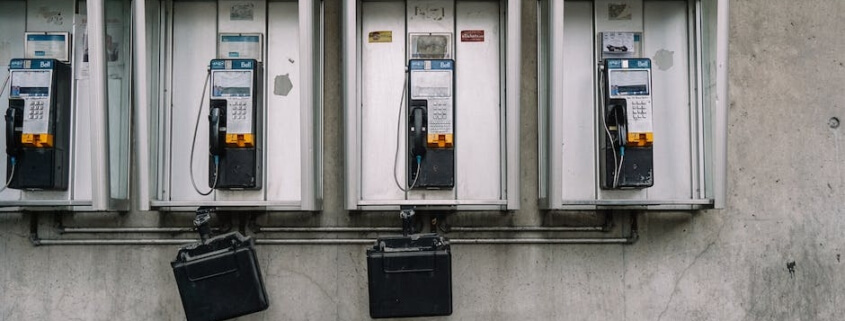How is Public Mobile Coverage?
In today's increasingly connected world, having reliable public mobile coverage is essential for communication and staying in touch. Whether you’re an individual, a business or an organization, there are times when you need to guarantee you have good coverage, no matter where you are.
Fortunately, public mobile coverage has improved significantly, thanks in part to advances in technology as well as an increase in the number of networks and operators in many countries. There are a range of tools available with which to test and monitor public mobile coverage, like Ofcom’s mobile coverage checker or OpenSignal.
These tools allow you to check the signal strength and quality of service you can expect to receive, in both indoor and outdoor areas. The results can be broken down by network and country, giving you an idea of which networks you can expect to get the best coverage from. This is especially useful if you are travelling, as you can compare the coverage of different providers.
In addition, public mobile coverage can also be improved by boosting signal strength – this can be done using dedicated antennae, which act as receivers, or repeaters, which are devices that receive, amplify and then broadcast the signal. These can be used to significantly boost the strength of a signal in a particular area, so that you can reliably call, text and access the internet, no matter where you are.
Overall, public mobile coverage has improved drastically in recent years, with some countries now offering more than 80% coverage throughout their borders. As such, it's now easier than ever before to stay connected no matter where you might be.
Public mobile coverage has been a real blessing in countries where cellular connectivity providers are unavailable. It allows people to stay connected to the Internet, share their experiences and keeps them up to date with developments in their local area. Public mobile coverage typically consists of local cellular carriers like AT&T, Verizon, T-Mobile, Sprint, etc. who provide coverage in certain locations, while smaller, regional providers may also provide some coverage in certain parts of the country.
Today, public mobile coverage is much better than it was even a few years ago. 4G mobile access is now becoming far more common, especially in urban areas. This is allowing people to access much faster connection speeds with better reliability. Even rural areas are starting to benefit from better mobile coverage, allowing those who live in more remote areas to stay connected.
The biggest challenge with public mobile coverage is that it can sometimes be patchy. Depending on the provider, coverage can vary drastically from one location to the next. This can be especially problematic for those who regularly travel, as it can be difficult to find a consistent signal.
Overall, public mobile coverage is much better than it was a few years ago. More cellular carriers are offering coverage in more locations, and connection speeds are faster than ever. However, there are still some areas where coverage is rather patchy and unreliabilities can be experienced. With the help of more local carriers and more carefully planned cell tower locations, public mobile coverage can eventually reach the same level of reliability enjoyed by those living in larger cities.
With the barrage of modern technology available at our fingertips, having access to reliable public mobile coverage is a must in today’s always connected society. Whether you’re using your phone for business or personal reasons, you should be able to depend on a strong signal in order to stay connected to the world.
But how is public mobile coverage currently? In short, public mobile coverage is getting better all the time. Many phone networks have made efforts to improve their coverage and have invested in reliable infrastructure that extends to rural and remote areas. Networks have also collaborated with third-party providers to expand their services.
This improved coverage means that you can now have a better quality call no matter where you are. This is great news for people who travel a lot, since they’ll be able to stay connected while on the move. It also makes it easier to access data and make use of features like video calling and streaming.
As well as getting better, coverage is also becoming more affordable. Mobile networks are now offering competitive deals and packages that make it easier for users to access quality coverage without high costs. This makes it even more feasible for people to choose a network that can meet their needs and budget.
It’s also worth noting that public mobile coverage isn’t the same everywhere. Depending on where you are in the world, you might experience stronger coverage in certain areas and weaker coverage in others. It’s important to do some research so you can choose a network that will suit your needs.
Over all, public mobile coverage is becoming better, more reliable and more affordable. This is great news for users who can now enjoy quality coverage wherever they go. If you’re in the market for a new mobile network or are just wondering how public mobile coverage is in a certain area, now is a great time to start looking.
The public mobile coverage in the United States has been steadily improving since the turn of this century. As mobile devices become increasingly popular and more people rely on them for critical communication, mobile networks are making significant investments to satisfy this hunger for better and more reliable coverage. In fact, the latest figures suggest that the public mobile coverage in the US currently stands at an impressive 94% of the population. This means that almost everyone in the United States can access some form of mobile coverage, either through voice and data, or both.
To enable this level of coverage and accessibility, mobile network operators have invested heavily in their infrastructure and hardware. This includes building more and better base stations, upgrading existing ones, and installing the necessary supporting equipment. Network providers are also using innovative technological innovations, such as Carrier Aggregation, Massive MIMO, and Small Cells, to ensure better public mobile coverage in areas of high activity.
The public mobile coverage is mostly delivered through 4G and 5G networks. While 5G offers better speeds, improved latency, greater coverage, and greater connections, 4G still has its advantages. It allows for faster speeds than 3G, and it includes better coverage at a lower cost. Furthermore, 4G services are available to most, if not all, areas of the United States, making it the most reliable option for people on the go.
With the increase in public mobile coverage comes the need to prioritize data plans. While some networks provide unlimited data plans, this is generally recommended for those who use their devices for streaming, gaming, or conducting other similar activities. When looking for a data plan, it is important to take into account the cost and the coverage, as well as any extra features that may be desired.
Overall, the public mobile coverage in the United States can be considered excellent. With the growing need for fewer dropped calls, faster speeds, and better overall experience, mobile networks are investing heavily in that regard. The result is coverage that helps to keep up with the changing times.
In today’s world, staying connected is a vital lifeline to the rest of the world, and having reliable mobile coverage is essential to staying in touch with family, friends, and access to vital services. This is why public mobile coverage is extremely important.
Public mobile coverage, or public mobile networks, refers to telecommunications services that are publicly accessible, such as 2G, 3G, and 4G networks. Public coverage is provided by mobile network providers such as Verizon, AT&T, and T-Mobile. These providers are required to cover specific geographic regions, known as the ‘service area’, with quality signals for better network access and performance.
When it comes to coverage, public networks usually offer a good level of accessibility to users across the country. For example, in the U.S., public networks are typically available in most metropolitan areas, but may differ in rural locations. This is because it is more difficult and less cost-effective for mobile operators to service rural populations.
In terms of network quality, public coverage is generally reliable, though it may vary in different places. Public networks are constantly being improved and upgraded to provide better and faster connection speeds, so coverage can be variable depending on the current infrastructure and technologies used. Public coverage also tends to be more cost-effective than private coverage, which can be expensive, making it accessible to more people.
Overall, public mobile coverage is important in keeping people connected and accessing vital services. While it can differ in different locations, public mobile coverage is almost always a good, reliable option for basic data and communication needs.










Leave a Reply
Want to join the discussion?Feel free to contribute!